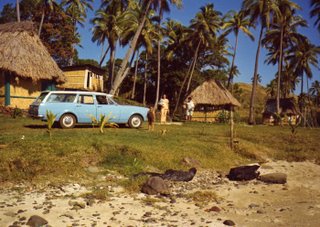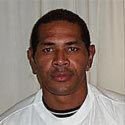
from Wendy
Here are some stats on Fiji-born migrants in Australia. I guess this excludes those on visitor visas, students, people on medical visas, over-stayers. Note the confusion people have with classification - Fijian, Indian, Indo-Fijian, Fijian Indian etc. The notes come from a department of DIMEA - Department of Immigration, Multicultural and Ethnic Affairs. The stats show that indigenous Fijians are fewer than migrants from the Indian diaspora, if you pardon that term!
The Fiji-born Community in AustraliaHistorical backgroundBy the mid-1950s there were over 2,000 Fiji-born persons in Australia. Fijian migration to Australia became significant in the late 1960s. The Fijians were attracted to Australia by the prospect of better employment, higher wages and improved welfare services. By 1966, over 60% of Fijians living in Australia had settled in Sydney and over the past two decades this pattern of settlement in Sydney has continued.
Migration accelerated in the post-independence decade of the 1970s and by 1986 there were 14,749 Fiji-born persons in Australia. Following the military coups and political unrest in Fiji in 1987, Australia received an influx of Fijian Indians seeking refugee asylum. By 1991 the Fiji-born population in Australia had increased to 30,149.
The Fiji-born comprise several ethnic groups, Fijian, Chinese, Indian, European, Rotuman and others, all of whom are part of the migration stream to Australia. Most Fijians in Australia are of Fijian-Indian ethnicity. About 53% of Fijians in Australia are Christians (mainly Methodists), 38% are Hindus and 8% are Muslims.
Almost all Fijians are proficient in English. Many of the Fijian-Indians speak Hindi or other Indian languages at home. Over 80 percent of Fijians in Australia are under fifty years of age. The Fijians retain strong social and economic ties with their relatives in Fiji.
The community todayGeographic distribution
The latest Census in 2001 recorded 44,040 Fiji-born persons in Australia, an increase of 19 per cent from the 1996 Census. The 2001 distribution by State and Territory showed New South Wales had the largest number with 27,080 followed by Queensland (7,550), Victoria (7,080) and South Australia (770). Of the Fiji-born in Australia, there were 20,570 males (46.7 per cent) and 23,470 females (53.3 per cent). The sex ratio was 87.6 males per 100 females.
Employment
Among Fiji-born people aged 15 years and over, the participation rate in the labour force was 69.6 per cent and the unemployment rate was 8.6 per cent. The corresponding rates in the total Australian population were 63.0 and 7.4 per cent respectively. Of the 25,740 Fiji-born who were employed, 44.9 per cent were employed in a Skilled occupation, 33.9 per cent in Semi-Skilled and 21.2 per cent in Unskilled.
Citizenship
At the 2001 Census, the rate* of Australian Citizenship for the Fiji-born in Australia was 86.3 per cent. The rate for all overseas-born was 75.1 per cent.
* Includes adjustments for people not meeting the residential requirement for citizenship, temporary entrants to Australia and underenumeration at the Census.
Language
The main languages spoken at home by Fiji-born people in Australia were Hindi (54.4 per cent), English (24.9 per cent), and Fijian (9.0 per cent).
Of the 33,060 Fiji-born who spoke a language other than English at home, 94.7 per cent spoke English very well or well and 4.1 per cent spoke English not well or not at all.
Religion
At the 2001 Census the major religions amongst Fiji-born were Hinduism (19,770 persons), Islam (5,770 persons) and Western Catholic (4,500 persons).
Of the Fiji-born, 3.5 per cent stated 'No Religion'. This was lower than that of the total Australian population (15.5 per cent)
Ancestry
In the 2001 Census, the top three ancestries that Fiji-born persons reported were, Indian (25,000), Fijian (7,450) and Indian-Fijian (1,620).
Jointly produced by Multicultural Affairs Branch and the Economic and Demographic Analysis Section of DIMIA. All data listed in this summary are from the Australian Bureau of Statistics Census of Population and Housing. sources for the Historical background are available at http://www.immi.gov.au/statistics/infosummary/source.htm
























